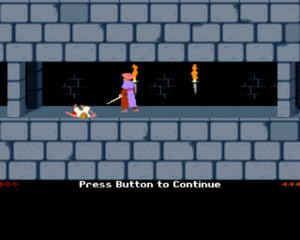From my experience I still found a lot of charm and enjoyment from the arcade we visited. In one of my earlier posts I mentioned how arcades make a special atmosphere that takes the visitor to what might be called an alternate reality, with the poorly lit labyrinths of flashing games occupied with individuals focused on there tasks for entertainment and challenge. This experience may be compared with what one might about from the early days of Coney Island, though I have never been.
There I hanged out with friends, ate pizza, and primarily engaged in games both arcade and not. The first thing I did was play mini golf with a group of other people. The game didn’t have any structure to it though that was intended, it was mostly used as an outlet to look at the neon colors of the course and strange imagery of the compact room. People challenged their skills at it but only partially, myself included. It was mostly an excuse to chat a bit and hit a ball and it was fairly pleasant. The decided ending point was when everyone who wanted to make it to the last hole had a chance to. Once a ball was hit on the last hole it fell down into a recess that couldn’t be retrieved and thus ending the game for the player.
After playing mini golf I had some lunch and then participated with someone in a few arcade games. Overall we tried out two. One was a bright and exaggerated version of Space Invaders, neither of us really had any idea of what was happening during the game but we both found it fairly amusing if a bit seizure inducing. Next we tried a more physically active game where we had to cooperate to try and hit as many shining buttons as possible, it was frantic and required fast reflexes on both our parts, by the end of it our hands hurt from smashing large plastic buttons so furiously.
The modern arcade has a strange if somewhat niche place in the current system of entertainment and gaming. It appears to mostly be a place people spend to celebrate or enjoy company with friends, if in a somewhat novel way to how most would ‘play’ together. I noticed at the particular arcade we went to that a lot of arcade games where derived from games not originally found in arcades, such as Mario Kart, Plants vs. Zombies, and a mobile game called Crossy Road. This is a clear indication of how modern personal games can feed into public arcade games, where the success of the later is emulated in the other.
Given the previous statement and the certain nostalgic and classic feel an original arcade game can give, I would be delighted to see more original arcade games being produced once again with off the wall game concepts and fresh design. Arcade games have always meant to be flashy but seeing some art in the process would be refreshing, if at least as a novelty and nothing else. Such would really but the magic back in the cabinet.



